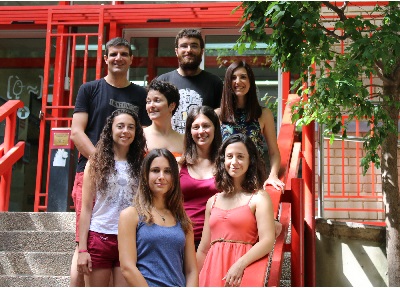Researchers from the University of Valencia and the INCLIVA Psychiatry and Neurodegenerative Diseases Research Group have proven the ability to change the structure and connectivity of interneurons in the adult brain, the communication bridge between neurons. The results of the research, led by Juan Nácher Roselló, professor in the Department of Cellular Biology, Functional Biology and Physical Anthropology at the University of Valencia, have been published in the journal Frontiers in Cellular Neuroscience.

Research Group in Psychiatry and Neurodegenerative Diseases
of INCLIVA
According to Juan Nácher, "although we have traditionally had a static view of the adult brain, we have known for decades that neurons are capable of modifying their structure and connections to adapt to a changing environment and perform cognitive functions such as learning or memory. The connections between neurons are largely made through structures called dendritic spines. These spines and the connections involved appear and disappear depending on the neuronal activity, influenced by different events such as stress and other adverse experiences”.
Until now, the study of how dendritic spines change structure, and consequently neuronal connections in the adult brain, has been limited to the spines found on excitatory neurons, which are the neurons primarily responsible for essential communication pathways in the brain. The functioning of excitatory neurons is regulated in turn by inhibitory neurons, or interneurons, which synchronise them and integrate them into local circuits.
"The aim of our research was to determine if the dendritic spines of the interneurons, and consequently their connections, were also dynamic and therefore capable of change", points out Juan Nácher.
"We have observed under the microscope in real time the appearance and disappearance of these spines with the help of transgenic mice that have fluorescent interneurons", emphasises the professor from the University of Valencia. "To stimulate these events they used glutamate, a molecule that interferes with communication between neurons and that acts as a neurotransmitter that is released by the transmitting neuron and is captured by the receiving neuron, usually in a dendritic spine", he indicated.
"We choose glutamate because specific receptors, NMDA type, involved in memory formation, participate in its uptake. What we did was block the binding of glutamate to this receptor in the interneurons of our mice using a compound, MK801. When we performed the blocking, we observed changes in the animals' anxiety and locomotion, which confirmed its effect on the brain", explains Juan Nácher. "In addition, the administration of MK801 rapidly decreased the rate of appearance of new dendritic spines and the density of these spines in the interneurons", he adds.
"Our results show the ability to change the structure and connectivity of interneurons in the adult brain and the important influence of NMDA receptors in this process", declares Juan Nácher, for whom the results are particularly interesting since the alterations of these receptors and in interneurons have been found in different psychiatric diseases such as schizophrenia. The discovery opens the door to the development of possible therapeutic pathways against this type of disease.
Article:
Marta Perez-Rando et al.: «NMDA Receptors Regulate the Structural Plasticity of Spines and Axonal Boutons in Hippocampal Interneurons» Front. Cell. Neurosci., 12 June 2017 | https://doi.org/10.3389/fncel.2017.00166
Access to the publication: https://www.ncbi.nlm.nih.gov/pmc/articles/PMC5466979/

.jpg)







